Mofongo, a heartwarming dish with roots deep in culinary tradition, beckons home chefs and food enthusiasts alike. This staple, made from humble plantain, transforms through a simple process of frying and mashing into a comforting meal that resonates with the warmth of its Caribbean origin. Each bite is a testament to the dish’s rich history and the joy it brings to tables around the world.
In this article, we unravel the secrets to crafting the perfect mofongo. From selecting the right plantains to mastering the art of mashing, we cover every step with precision. Our guide is designed not just to instruct about the preparation of mofongo but to inspire, inviting readers to infuse their personal touch into this timeless recipe. Whether you’re a seasoned cook or new to the kitchen, join us in celebrating the simple pleasures of cooking with a dish that’s as nutritious as it is delicious.
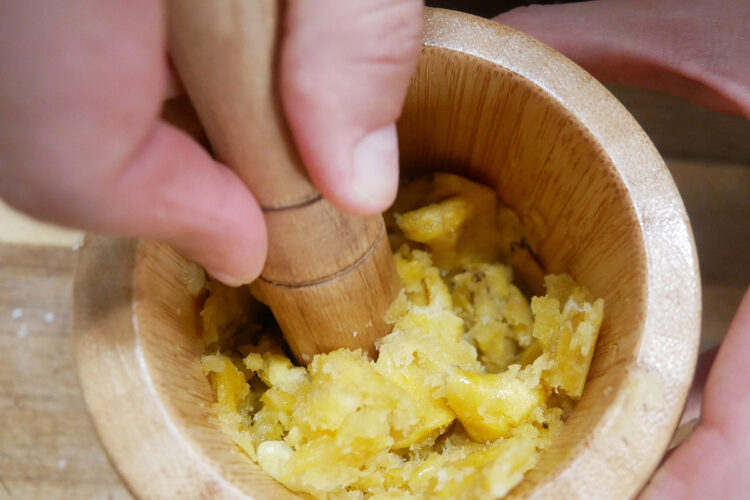
Ingredients and Variations
Essential Ingredients for Classic Mofongo: Mofongo’s soul lies in its simplicity and the quality of its ingredients. At its core, the dish requires:
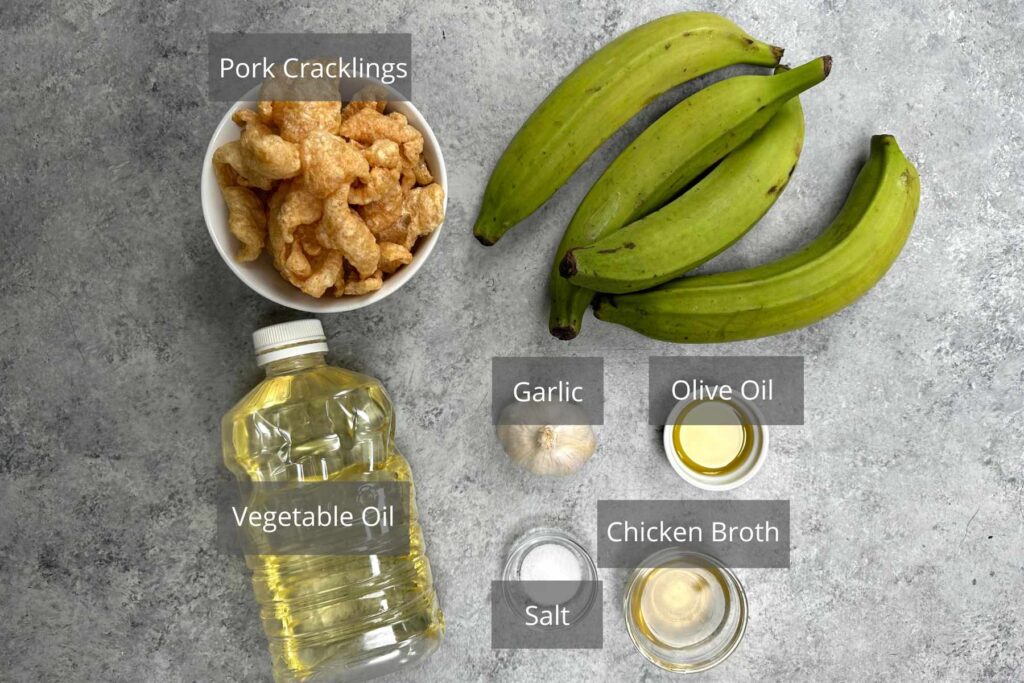
- Green plantains: The starchy cousin of bananas, these are peeled and cut into chunks.
- Garlic: Crushed or minced, garlic adds a pungent depth of flavour.
- Pork rinds (chicharrón): These add a savoury crunch but can be omitted for a vegetarian version.
- Olive oil: A drizzle helps to bind the ingredients and enrich the taste.
- Salt and pepper: For seasoning, adjust to taste.
Variations: Seafood, Vegetarian, and Vegan Twists: The beauty of mofongo is its versatility. Here are some popular variations:
- Seafood Mofongo: Incorporate shrimp, crab, or lobster for a luxurious twist.
- Vegetarian Mofongo: Replace pork rinds with crispy fried tofu or mushrooms.
- Vegan Mofongo: Use vegetable broth and omit animal products entirely, adding extra olive oil for richness.
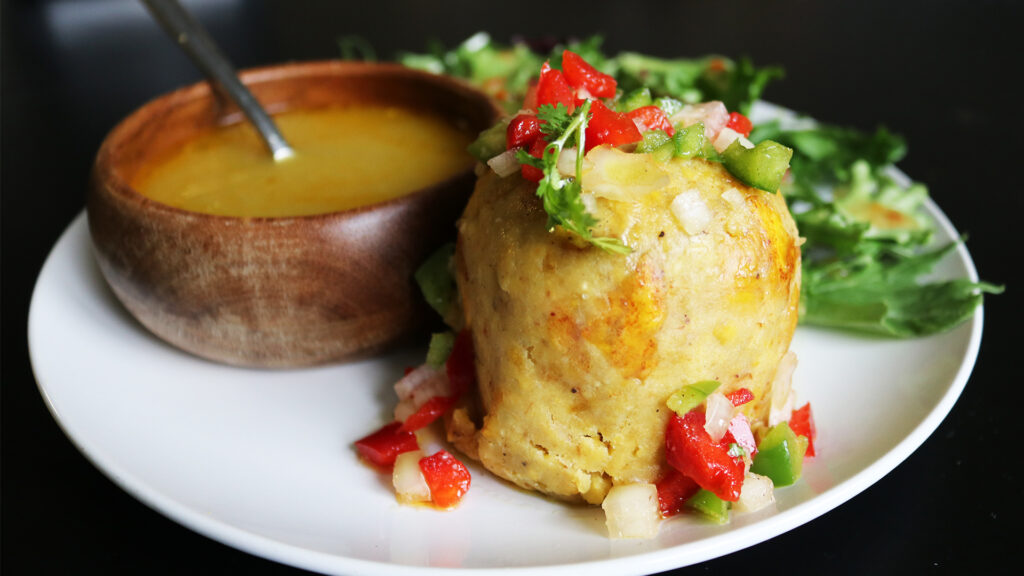
Each variation maintains the integrity of the traditional dish while allowing for personal preference and dietary needs. The key is to balance the flavours and textures to create a harmonious dish that pays homage to the original while catering to modern tastes.
Step-by-Step Preparation of mofongo
Choosing the Right Plantains:
The journey to a perfect mofongo begins with selecting the ideal plantains. Look for green plantains that are firm to the touch, indicating they are at the right stage of ripeness for frying. Avoid overly soft or blackened plantains, as these are too ripe and will result in a mushy texture.

The Technique of Frying Plantains:
Once you’ve chosen your plantains, it’s time to fry them to golden perfection. Start by peeling and slicing the plantains into one-inch thick rounds. Heat a generous amount of oil in a pan—enough to cover the plantains halfway—and fry them until they are golden brown on both sides. The goal is to achieve a crispy exterior while keeping the inside tender.
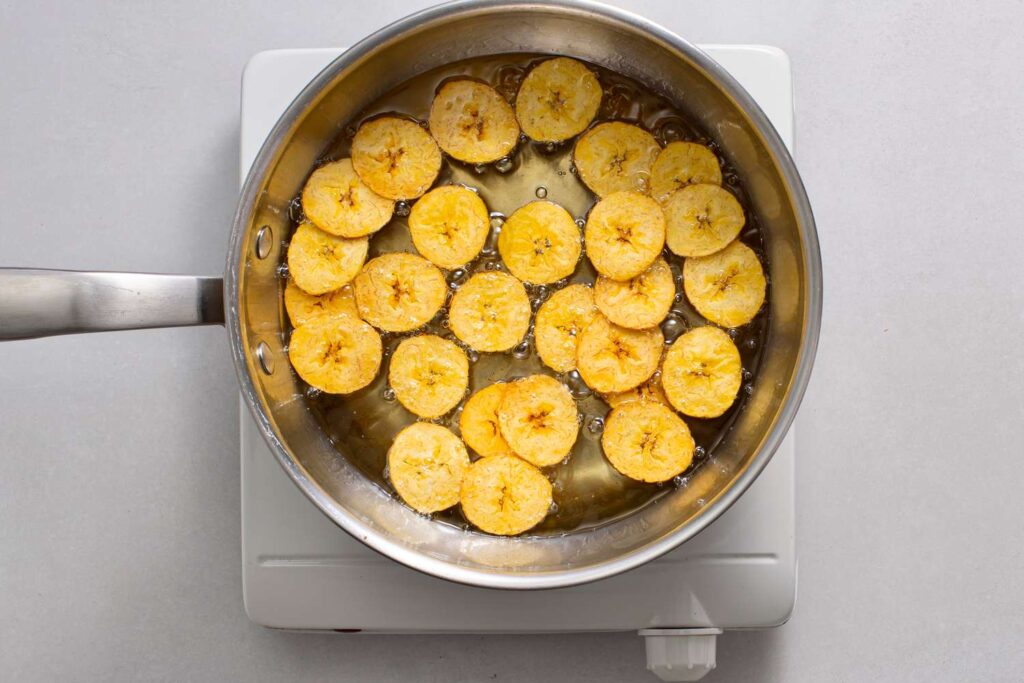
Mashing the Magic:
After frying, drain the plantains on a paper towel to remove excess oil. While they’re still warm, it’s time to mash them. Traditionally, a mortar and pestle are used for this step. Add the fried plantains to the mortar along with crushed garlic, salt, and pepper. For every two plantains, use about two cloves of garlic. Begin mashing until the mixture is coarsely ground, then fold in the crispy pork rinds. If you’re making a vegetarian version, this is where you’d add your alternative ingredient.

The key to a great mofongo is not to over-mash; you want to maintain some texture. Once everything is combined, drizzle in a bit of olive oil and mix gently. This will help the mofongo stick together and add a subtle richness to the flavour.
Final Touches:
Shape the mofongo into individual servings while it’s still warm. You can form it into balls or use a small bowl to mould it into a dome shape. Serve immediately to enjoy the dish’s full spectrum of flavours and textures.
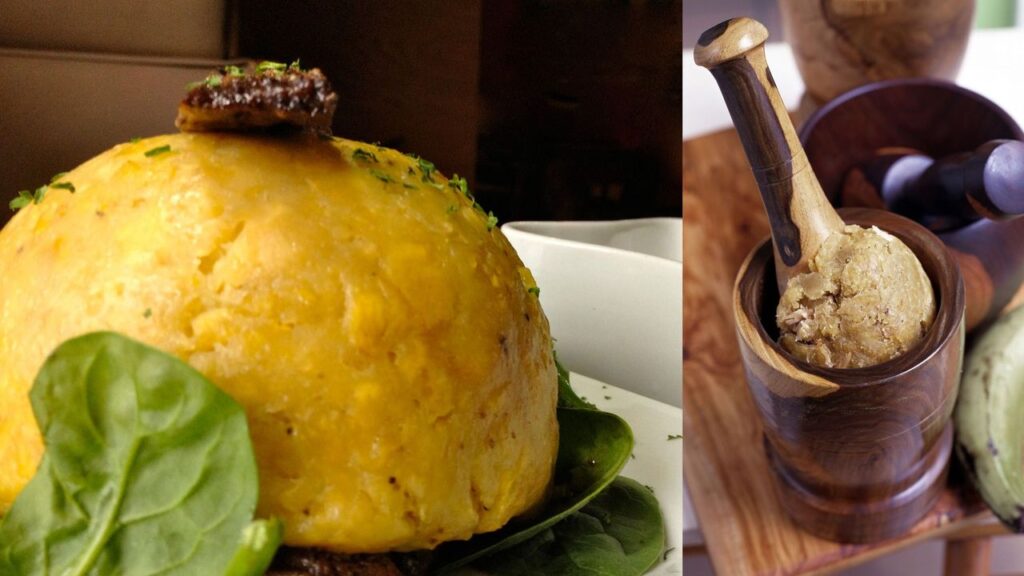
Cooking Tips and Tricks
Creating mofongo is as much about technique as it is about tradition. Here are some tips and tricks to ensure your mofongo is a success every time:
Achieving the Perfect Texture:
- Don’t Overcook the Plantains: They should be golden and tender, not brown and crispy. Overcooking will make them hard to mash and affect the final texture.
- Mash While Warm: Plantains are easier to mash and blend with other ingredients while they’re still warm. If they cool down, they may become stiff and less pliable.
- Consistency is Key: Aim for a texture that’s not too smooth and not too chunky. You want to feel the individual bits of plantain, garlic, and pork rinds in every bite.
Flavor Enhancements: Garlic and Herbs:
- Fresh Garlic: Use fresh garlic for a more potent flavour. The jarred kind can sometimes be too mild and won’t give the same kick.
- Herb Infusion: Consider infusing your olive oil with herbs like cilantro or oregano for an extra layer of flavour. Just warm the oil with the herbs before adding it to the mofongo.
- Balance the Salt: With the salty pork rinds, be cautious with additional salt. Taste as you go to ensure a balanced flavour profile.
Serving and Presentation
The final step in the mofongo-making process is serving and presentation, which can turn a simple dish into an extraordinary experience. Here’s how to serve mofongo with flair:
Traditional Serving Suggestions: Traditionally, mofongo is served in a pilón, the same mortar used to mash the plantains. This not only adds a rustic charm but also keeps the mofongo warm. If a pilón isn’t available, a small bowl can be used to mold the mofongo into a dome shape, which is then inverted onto the plate.
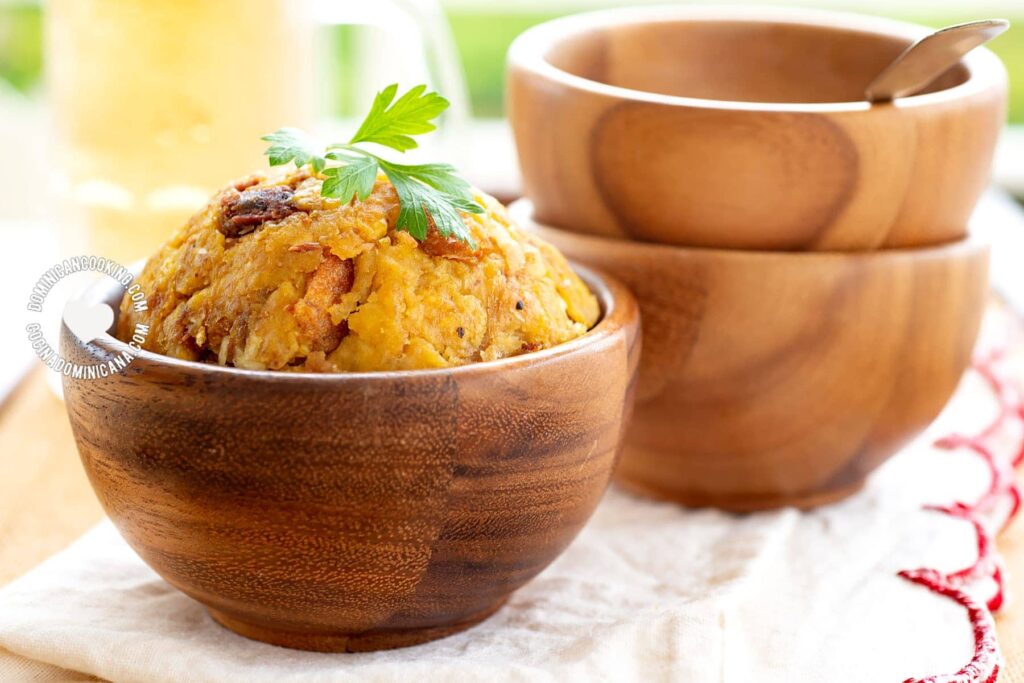
Modern Plating Techniques: For a contemporary twist, consider serving mofongo as a base for other dishes. It can act as a bed for grilled seafood or a nest for a savoury stew. The key is to maintain the integrity of the mofongo while complementing it with other elements on the plate.
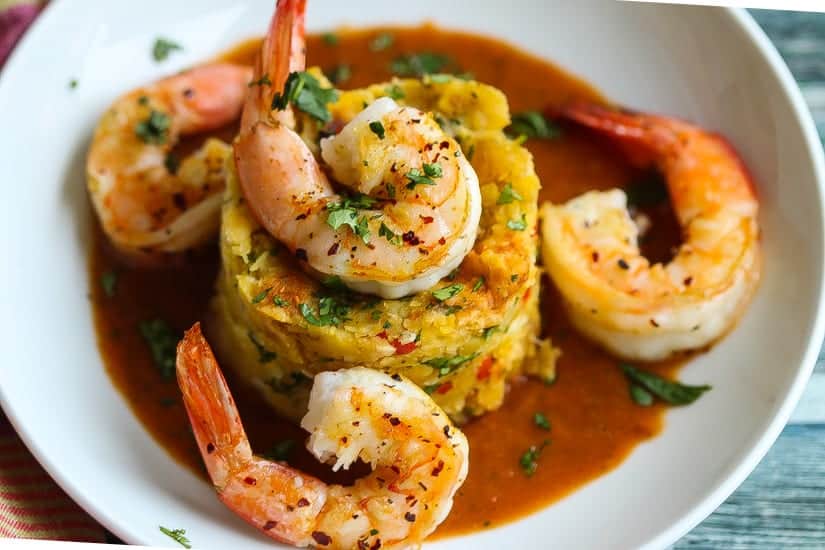
Garnishing for Impact: A sprinkle of finely chopped cilantro or a drizzle of garlic-infused oil can add colour and flavour. For a bit of crunch, top with additional crispy pork rinds or, for a healthier option, toasted nuts or seeds.
Serving Temperature: Mofongo is best enjoyed warm. If there’s a delay between preparation and serving, keep it covered in a warm oven. This ensures that the texture and flavours are at their peak when it’s time to eat.
Pairings and Accompaniments
Mofongo is a versatile dish that pairs beautifully with a variety of accompaniments. Here’s how to enhance your mofongo experience with the perfect pairings:
Complementary Dishes:
- Proteins: Mofongo goes well with a range of proteins. Try it with grilled chicken, fried pork, or seared fish. The savoury flavours of the meat complement the starchy goodness of the plantains.
- Stews and Sauces: A hearty garlic sauce or a rich tomato-based stew can be poured over the mofongo, adding moisture and depth of flavour.
- Salads: Balance the heaviness of mofongo with a light, citrusy salad. A mix of fresh greens with a lime vinaigrette works wonders.
Beverage Pairings: From Mojitos to Coffee:
- Mojitos: The refreshing mint and lime in a mojito cut through the richness of mofongo, cleansing the palate between bites.
- Beer: A cold, light beer can be a great companion to mofongo, especially if the dish is on the heavier side.
- Coffee: For those who enjoy mofongo as part of a brunch or late breakfast, a strong cup of coffee is the perfect match.
Final Analysis
In the heart of every mofongo lies a story, a tale of tradition, culture, and the simple joy of cooking. This dish, a staple of Caribbean cuisine, is more than just a meal; it’s a celebration of heritage and the power of food to bring people together. Through the act of preparing mofongo, we connect with generations past and share in the universal language of flavour and nourishment.
As we conclude our culinary journey, we reflect on the versatility and resilience of mofongo. It has adapted over time, embracing new variations while staying true to its roots. It’s a dish that invites experimentation and personalisation, making it accessible to all, regardless of culinary skill or dietary preference.
We hope this guide has not only provided you with practical knowledge about the preparation of mofongo but also inspired you to explore the rich tapestry of its history. Whether served in a traditional pilón or as part of a modern fusion dish, mofongo remains a testament to the enduring appeal of comfort food.
So, we invite you to roll up your sleeves, mash those plantains, and create a mofongo that’s uniquely yours. Share it with friends family, or savor it solo—however you enjoy it, mofongo is sure to satisfy the soul.

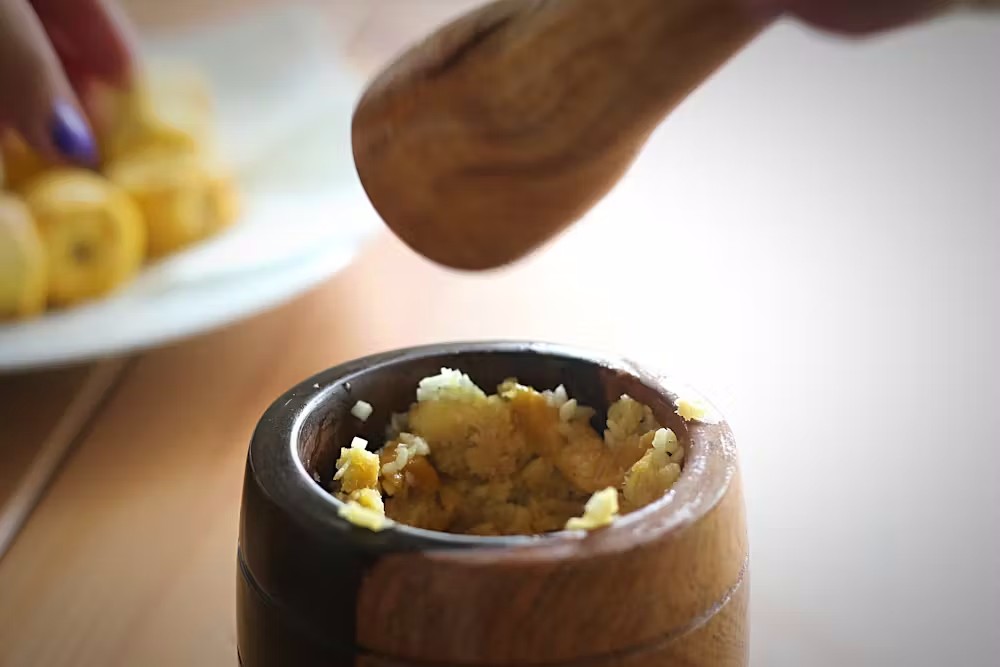



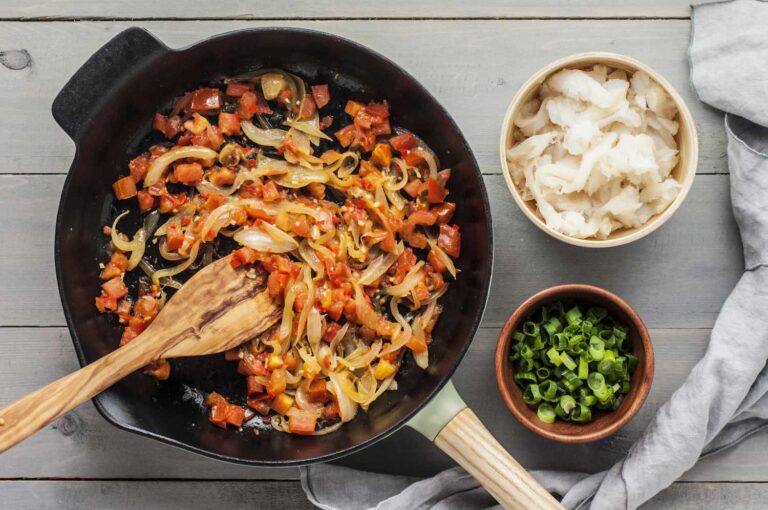

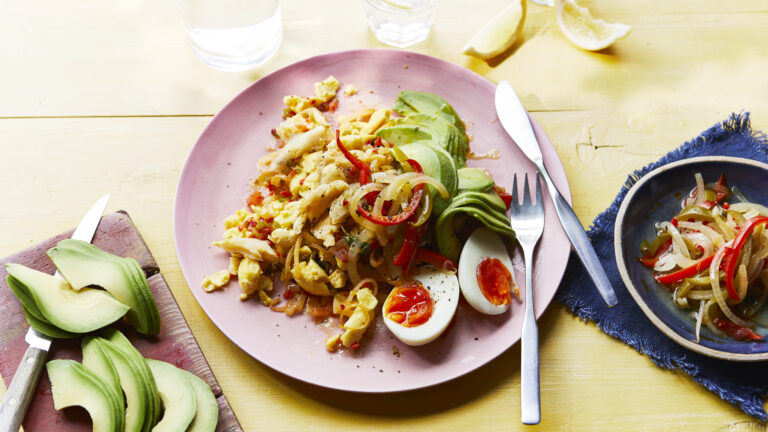
One Comment